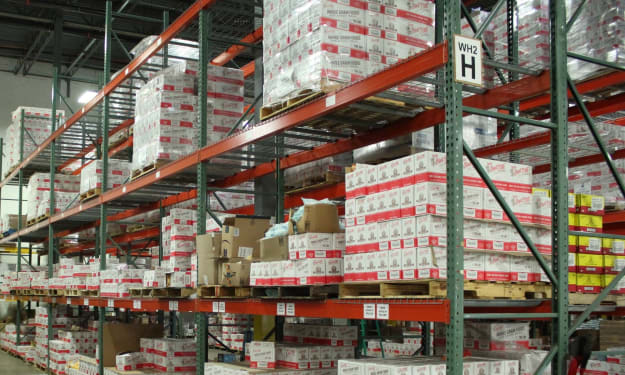Difference Between Traditional Trade vs Supply Chain Finance
Trade and Supply Chain Finance

In the supply chain domain, trade and supply chain finance are known to provide innovative solutions for the working capital gap that is faced by companies that are still growing. Traditional and SCF can unlock the potential in businesses through acceleration of cash flows, providing finance, reducing the end-to-end trade cycle, improving the financial ratios, resolving counterparty and other risks in cross-border transactions. However, both these systems are quite different. Let us dive into the differences between traditional trade and SCF.
What is Traditional Trade?
Traditional Trade is the exchange of goods and services between two parties. Here, goods and services are exchanged with the help of intermediaries such as banks, logistics companies, etc. The parties involved in a traditional trade transaction are the buyer, the seller, and the intermediary.
- Traditional trade involves the exchange of goods and services between the buyer and the seller. It is usually done through the medium of money, with the buyer paying the seller in cash or through a third-party payment system such as a credit card.
- The main advantage of traditional trade is that it allows for the quick and efficient exchange of goods and services between two parties without any need for a large amount of capital.
- This makes traditional trade a great option for smaller businesses, who may not have the resources to invest in large-scale international business operations.
What is Supply Chain Finance?
Supply Chain Finance (SCF) is a type of financing system that enables companies to better manage their cash flow. It is a system of financing that enables companies to improve their cash flow and liquidity by providing access to working capital financing. In SCF,
- The buyer and the supplier enter into a financing agreement that allows the supplier to receive early payment for goods and services, while the buyer can receive discounts on their purchases.
- This means that the supplier can receive payment earlier than they would normally, while the buyer can pay later and receive discounts on their purchases.
- The main advantage of SCF is that it allows companies to better manage their cash flow by providing access to working capital financing.
- This can help companies to better manage their cash flow and improve their financial ratios.
- It can also help companies to reduce their risk exposure to counterparty and other risks in cross-border transactions.
What are SCF Platforms and What are their Roles in Facilitating Digitally Enabled Trade?
SCF platforms are digital platforms that enable buyers and suppliers to access finance and optimize their working capital cycles. They provide buyers and suppliers with the ability to access finance, manage their payments, and track the progress of their transactions. Supply Chain Finance platforms are typically used in the context of trade finance, and they are designed to facilitate digital trade.
The role of SCF platforms is to
- Enable buyers and suppliers to access finance, manage payments, and track the progress of their transactions.
- They provide buyers and suppliers with access to financing, and they enable them to manage their working capital cycles in a secure, transparent and efficient manner.
- The platforms are designed to manage the entire end-to-end trade cycle, from purchase order management to invoice processing, payment initiation, and reconciliation.
- They enable buyers and suppliers to have better control over their finances and optimize their working capital cycles.
- They enable buyers and suppliers to access financing instruments such as receivables financing, purchase order finance, invoice discounting, and supply chain finance.
Financial Instruments that Play a role in modern SCF
Financial instruments are used to facilitate the financing of the trade process. The following are the most commonly used financial instruments in modern SCF.
It is a financial instrument that enables buyers and suppliers to access financing against the receivables that are due from buyers. This enables buyers and suppliers to access financing quickly and efficiently, and it helps them to manage their working capital cycles.
Purchase Order Finance
This is a financial instrument that enables buyers and suppliers to access financing against the purchase orders that buyers have placed with them. This enables buyers and suppliers to access financing quickly and efficiently, and it helps them to manage their working capital cycles.
Invoice Discounting
It is a financial instrument that enables buyers and suppliers to access financing against the invoices that they have raised. This enables buyers and suppliers to access financing quickly and efficiently, and it helps them to manage their working capital cycles.
It is a financial instrument that enables buyers and suppliers to access financing against the supply chain transactions that they have entered into. This enables buyers and suppliers to access financing quickly and efficiently, and it helps them to manage their working capital cycles.
Difference Between Traditional Trade and SCF in Terms of Working Capital Financing
Here are the key differences between traditional trade and SCF with respect to working capital financing.
Payment Terms: In traditional trade, the payment terms are determined manually and can take a long time. On the other hand, in SCF, the payment terms are determined by the third-party lender and can be much faster.
Security: In traditional trade, there is no third-party verification of the transaction which can lead to uncertainty and risk. However, in SCF, the third-party lender is able to verify the transaction and provide additional security to the parties involved.
Flexibility: Traditional trade is not very flexible as the parties involved need to agree on the price and other terms of the transaction before the exchange of goods and services. On the contrary, SCF provides more flexibility to the parties involved as they can negotiate the terms of the transaction with the third-party lender.
Risk: Traditional trade carries a certain level of risk as there is no third-party verification of the transaction. In SCF, the third-party lender is able to reduce the risk by providing additional security to the parties involved.
What are the Drivers for Traditional Trade and SCF for Suppliers?
The following are the drivers for traditional trade and SCF for suppliers.
Increased Efficiency: Increased efficiency is a driver for traditional trade and SCF for suppliers. A digital supply chain finance platform can help to improve the efficiency of the supply chain by reducing the time and cost of processing payments and invoices.
Greater Transparency: Suppliers get greater transparency into the supply chain with a digital SCF platform. Transparency is a driver for traditional trade and SCF because it makes it convenient for them to track their orders and payments.
Access to New Markets: On the back of a digital supply chain finance platform, suppliers can gain access to new markets and customers that allows them to grow their business.
Costs Related to Transactions: Traditional trade requires banks to provide services in LCs, sending/receiving/checking documents, and collecting payments. As this includes charges, it may be considered expensive when compared to SCF.
Time for E2E Processes: Traditional trade products have to go through comprehensive before verifying or receiving payments from the counterparty banks or financiers. This may take an extended time for clients to obtain finance as opposed to in SCF where it takes significantly less time.
Conclusion
In conclusion, there are a number of differences between traditional trade and SCF working capital solutions. Traditional trade involves the exchange of goods and services between two countries, while SCF is a financing system that provides access to working capital financing. Traditional trade involves the exchange of money between the parties, while SCF involves the exchange of invoices.
Additionally, in traditional trade, the parties involved have to deal with the risks associated with cross-border transactions, while in SCF, these risks are minimized. Finally, traditional trade and Supply Chain finance Platform both provide access to working capital, improved liquidity, reduced costs, and access to financing.
About the Creator
Enjoyed the story? Support the Creator.
Subscribe for free to receive all their stories in your feed. You could also pledge your support or give them a one-off tip, letting them know you appreciate their work.





Comments
There are no comments for this story
Be the first to respond and start the conversation.